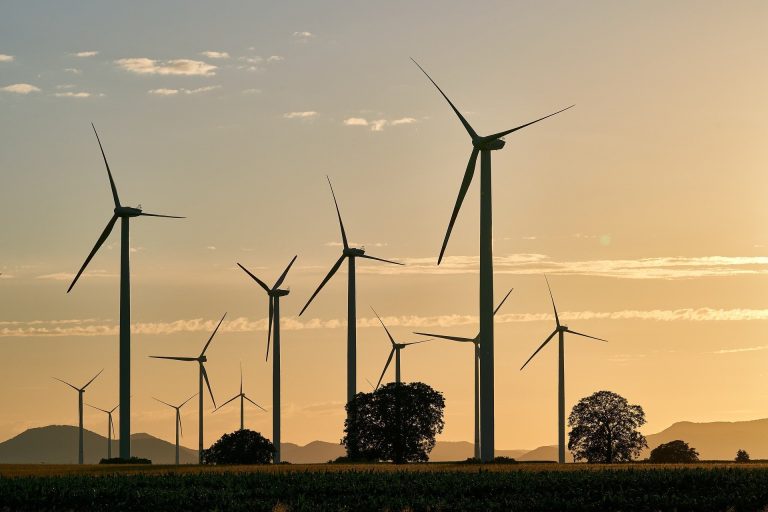Credit: Pixabay/CC0 Public Domain
Although 2023 marks a relatively slow year for new wind power installations in the United States, the industry continues to see growth, strong performance, expanding supply chains and attractive pricing, according to a report prepared by Lawrence Berkeley National Laboratory (Berkeley Lab) for the U.S. Department of Energy (DOE).
With electricity sales prices for newly built projects ranging from under $20 to over $40 per megawatt-hour (MWh), the cost of wind power is well below its value to the grid system, health, and climate.
“While the price of wind energy has trended upwards in recent years, especially in the central U.S., it remains attractive,” said Ryan Weiser, a senior scientist in Berkeley Lab's Energy Technologies Division. “When you factor in the health and climate benefits of wind energy, the economic value becomes even stronger,” he added.
The onshore wind market report, published annually, contains information on wind turbine sizes, energy prices, wind power's contribution to electricity supply and its societal benefits.
Wind is making up a large share of electricity supply. U.S. wind installations in 2023 were relatively low, totaling 6.5 gigawatts (GW) with investments of $10.8 billion. However, wind energy represents 10% of U.S. electricity supply and 37% in the Southwest Power Pool. As of the end of 2023, the U.S. had a total of 150 GW of wind installed. A record 366 GW of wind is seeking transmission interconnection.
Wind turbines are getting bigger and the wind energy market is expanding. Improvements in wind farm performance over the past few decades have been driven by larger turbines mounted on taller towers and with longer blades.
In 2013, no turbines had rotors larger than 115 meters in diameter; by 2023, 98 percent of newly installed turbines will have such rotors.
Wind energy prices are rising, but they remain attractive to buyers. Wind power purchase agreement prices have been trending upward since about 2018 and have recently ranged from under $20 per MWh to over $40 per MWh, depending on region and other details. These prices, made possible by federal tax support, are on par with recent solar power sales prices and projections of future fuel costs for gas-fired electricity generation.
The value proposition of wind power includes benefits to the grid and society. The value of wind power in the wholesale electricity market depends on the location of the wind farm, its hourly output profile, and how those characteristics correlate with real-time electricity prices and capacity markets. With natural gas prices falling, the market value of wind power has declined in 2023.
Wind power also reduces electricity sector emissions of carbon dioxide, nitrogen oxides, and sulfur dioxide. These reductions provide public health and climate benefits greater than the grid system value of wind power. All three of these values combined ($183 per MWh) significantly exceed the levelized cost of wind energy in 2023.
The Inflation Control Act has created new optimism for supply chain expansion: domestic manufacturing of towers and nacelles is poised for strength in 2023, and blade manufacturing has started to increase after several years of decline.
The Inflation Control Act included, for the first time, a production-based tax credit for domestic manufacturing of key wind energy components such as nacelles, towers and blades. It also expanded the wind energy installation tax credit, including a 10% bonus for projects that meet domestic content requirements. As a result, at least 15 manufacturing facilities have announced plans to open, reopen or expand to serve the onshore wind industry.
Energy analysts predict a resurgence in wind power deployment over the next few years. With the long-term extension of the wind energy tax credit and the opportunity for wind farms to earn two 10% bonus credits, analysts expect 2023 to be a low point for wind power deployment. Wind power deployment projections increase to an average of more than 15 GW per year from 2026 to 2028.
The complete Onshore Wind Market Report: 2024 Edition, a presentation slide deck summarizing the report, several interactive data visualizations, and an Excel workbook containing the data presented in the report can be downloaded at windreport.lbl.gov. Related reports on offshore wind and distributed wind are also available from the Department of Energy.
More information: Onshore Wind Market Report. emp.lbl.gov/wind-technologies-market-report/
Courtesy of Lawrence Berkeley National Laboratory
Source: Report Highlights Advancements in Wind Technology and Supply Chains (August 22, 2024) Retrieved August 22, 2024 from https://techxplore.com/news/2024-08-highlights-advancements-technology-chains.html
This document is subject to copyright. It may not be reproduced without written permission, except for fair dealing for the purposes of personal study or research. The content is provided for informational purposes only.

